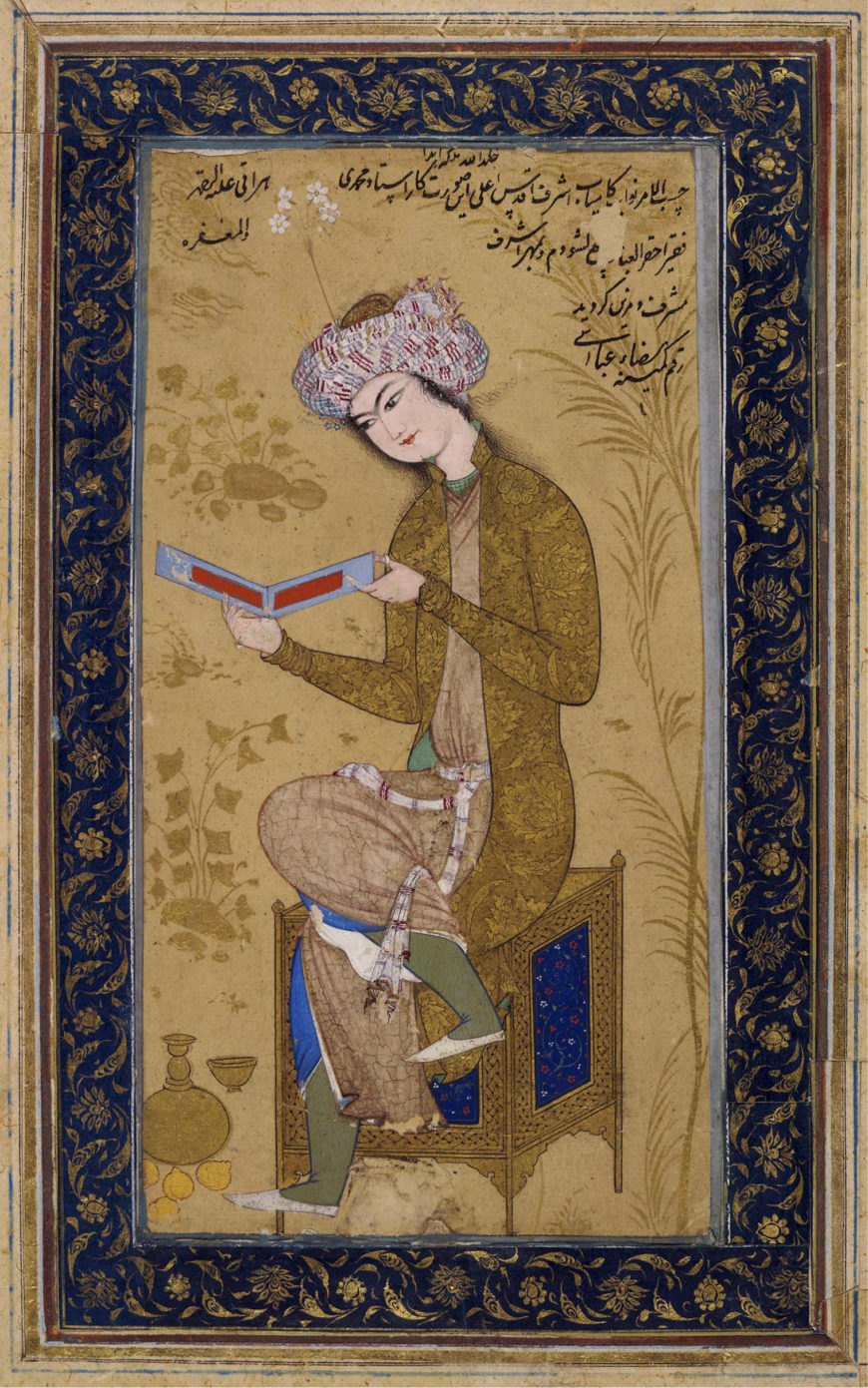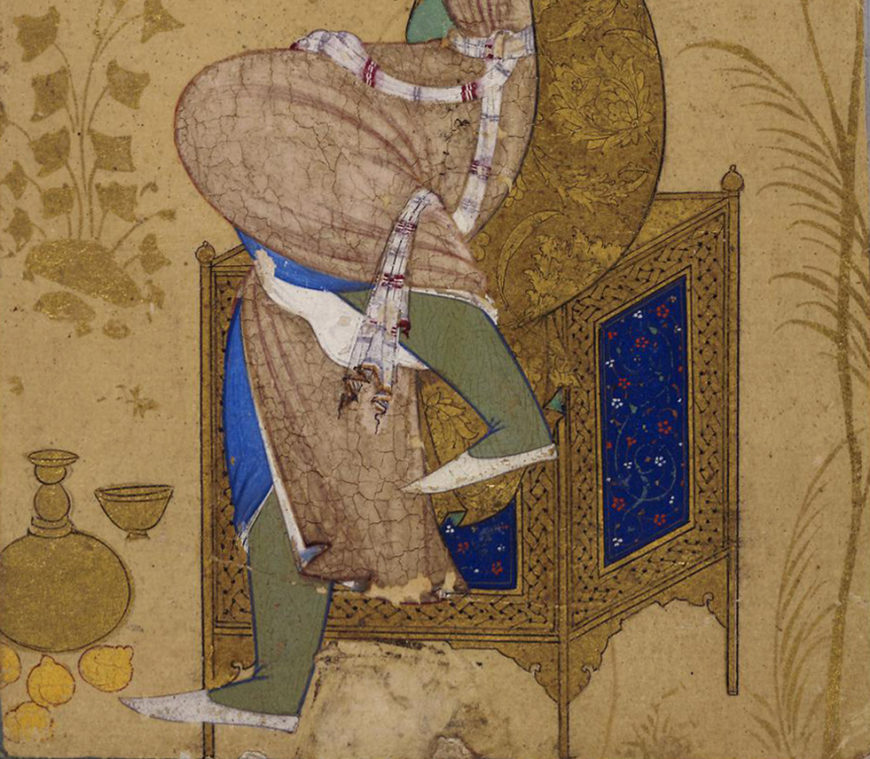
Riza-yi ʿAbbasi, Portrait of a young page reading, c. 1625–26, drawing, from Isfahan, Iran (© The Trustees of the British Museum)
The anonymous figure depicted in this painting embodies the fashion of Isfahan, Iran’s capital city under the rule of Shah ‘Abbas I (1571–1629).
International trade and the cosmopolitan atmosphere brought about by Shah ‘Abbas allowed a new class of stylish dandies to flourish in Isfahan at this time. Some of these dandies were ghulams—freed Christian slaves from Georgia and Armenia who had converted to Islam, while others were native Iranians.
The painter of this work, Riza-yi ‘Abbasi (about 1565–1635), was a highly significant figure in Shah ‘Abbas’s court, renowned for the finesse of his brushwork and the beauty of his portraiture. The inscription states that the portrait was produced for ‘the most pure Highness’, namely Shah ‘Abbas.

Riza-yi ʿAbbasi, Portrait of a young page reading (detail), c. 1625–26, drawing, from Isfahan, Iran (© The Trustees of the British Museum)
Elements of the painting provide an insight into several aspects of art and society at the Iranian court in the 1620s. The inscription indicates that it is based on a prototype by the artist Muhammadi, who would have been active at Herat (now part of Afghanistan) when Shah ‘Abbas lived there as a prince. This may reveal a nostalgic selection of subject by the shah rather than by Riza.

Riza-yi ʿAbbasi, Portrait of a young page reading (detail), c. 1625–26, drawing, from Isfahan, Iran (© The Trustees of the British Museum)
The slight proportions of the figure, as well as the tabouret (a small portable stand or cabinet) on which he sits, recall works of the 1560s to 1580s when Muhammadi was active. Despite these retrospective aspects of the painting, the sitter’s luxurious gold brocade coat with its large blossoms and curved leaves reflects the style of Isfahan and the type of opulent silk textiles available there in the seventeenth century.
Although Persian texts are reticent on the subject of the romantic life of Shah ‘Abbas, a portrait of the shah and a page by Muhammad Qasim, dated 1627, suggests that Abbas found beardless youths very appealing in the last years of his life.
© The Trustees of the British Museum

